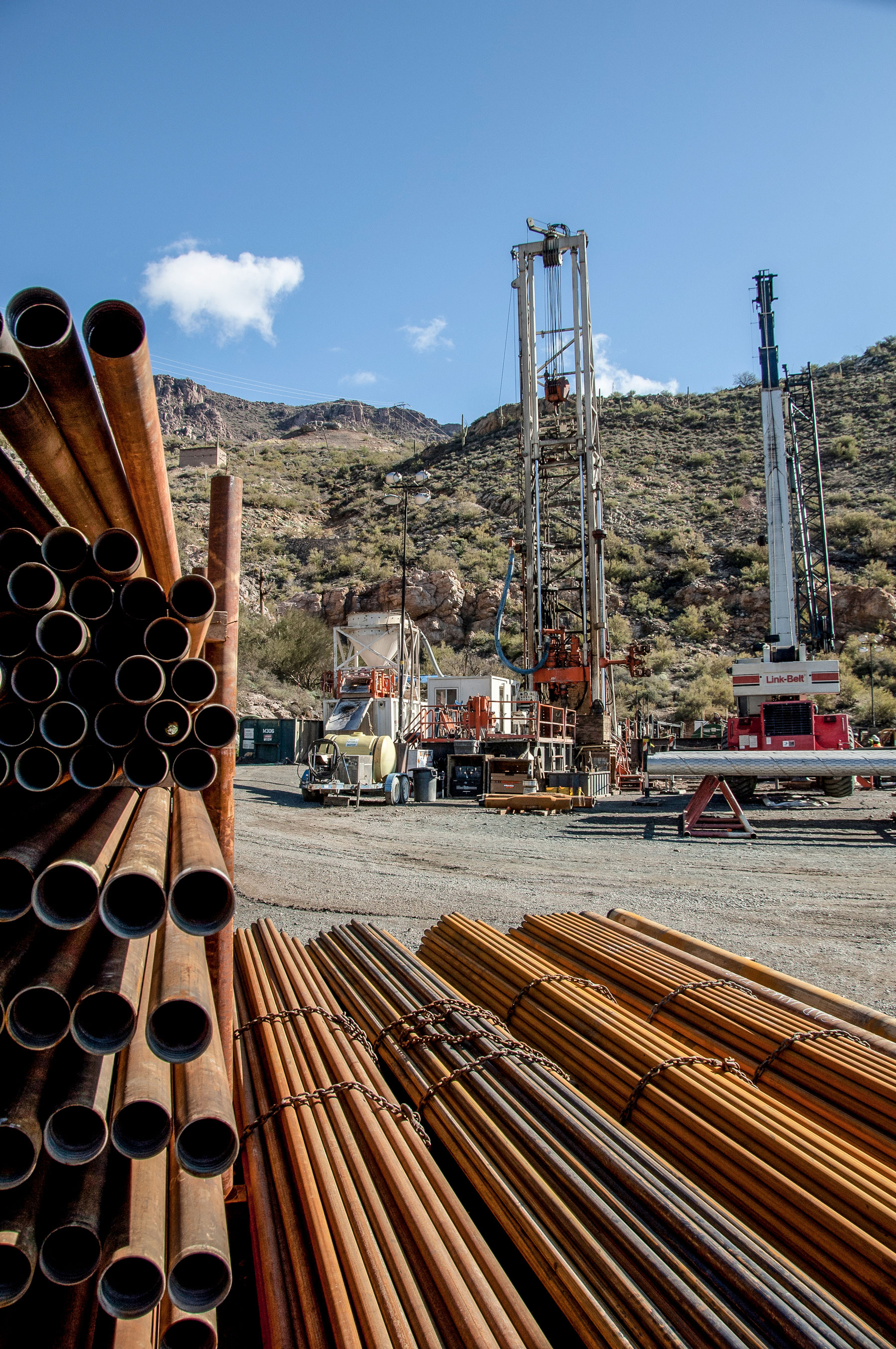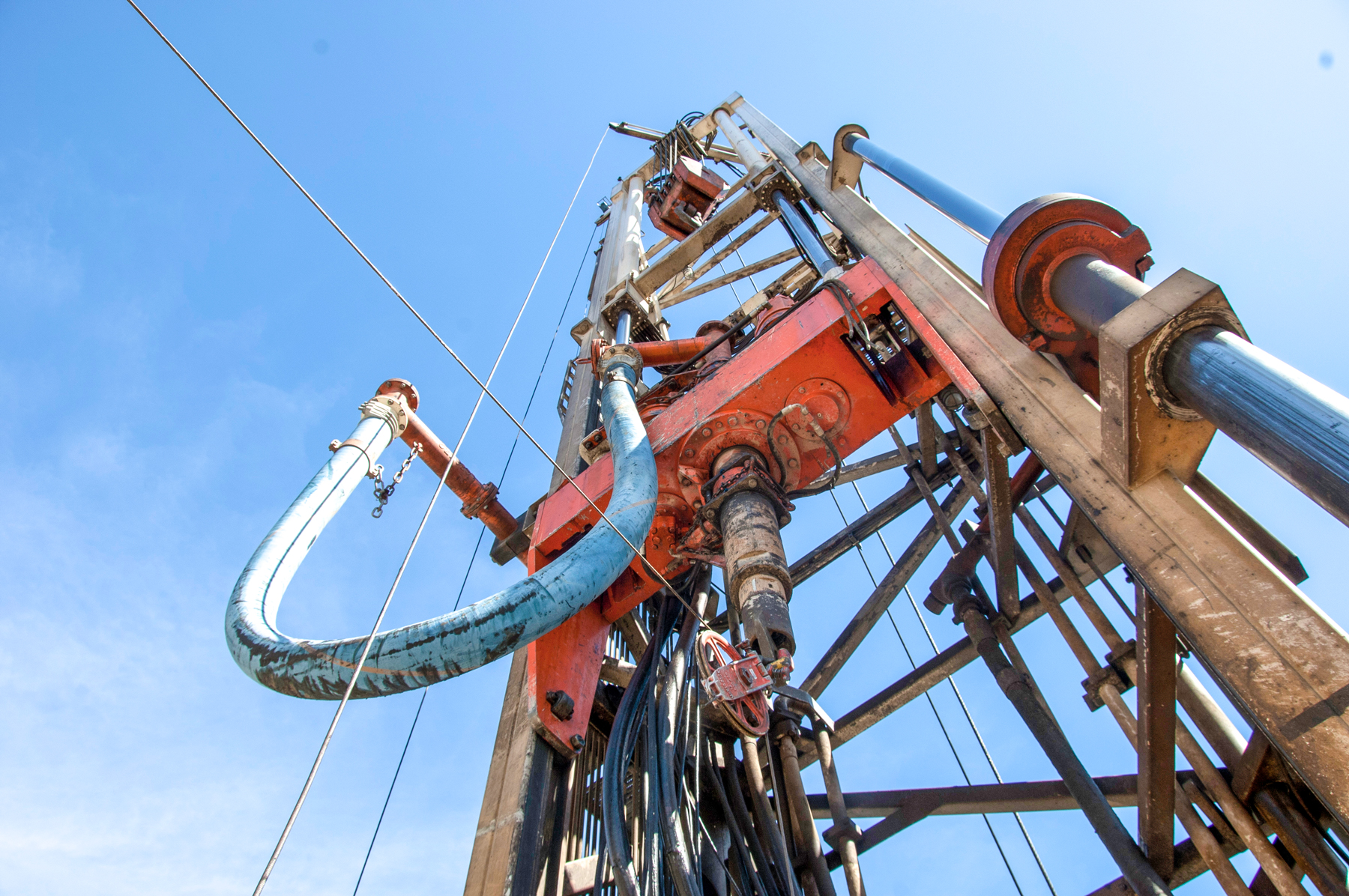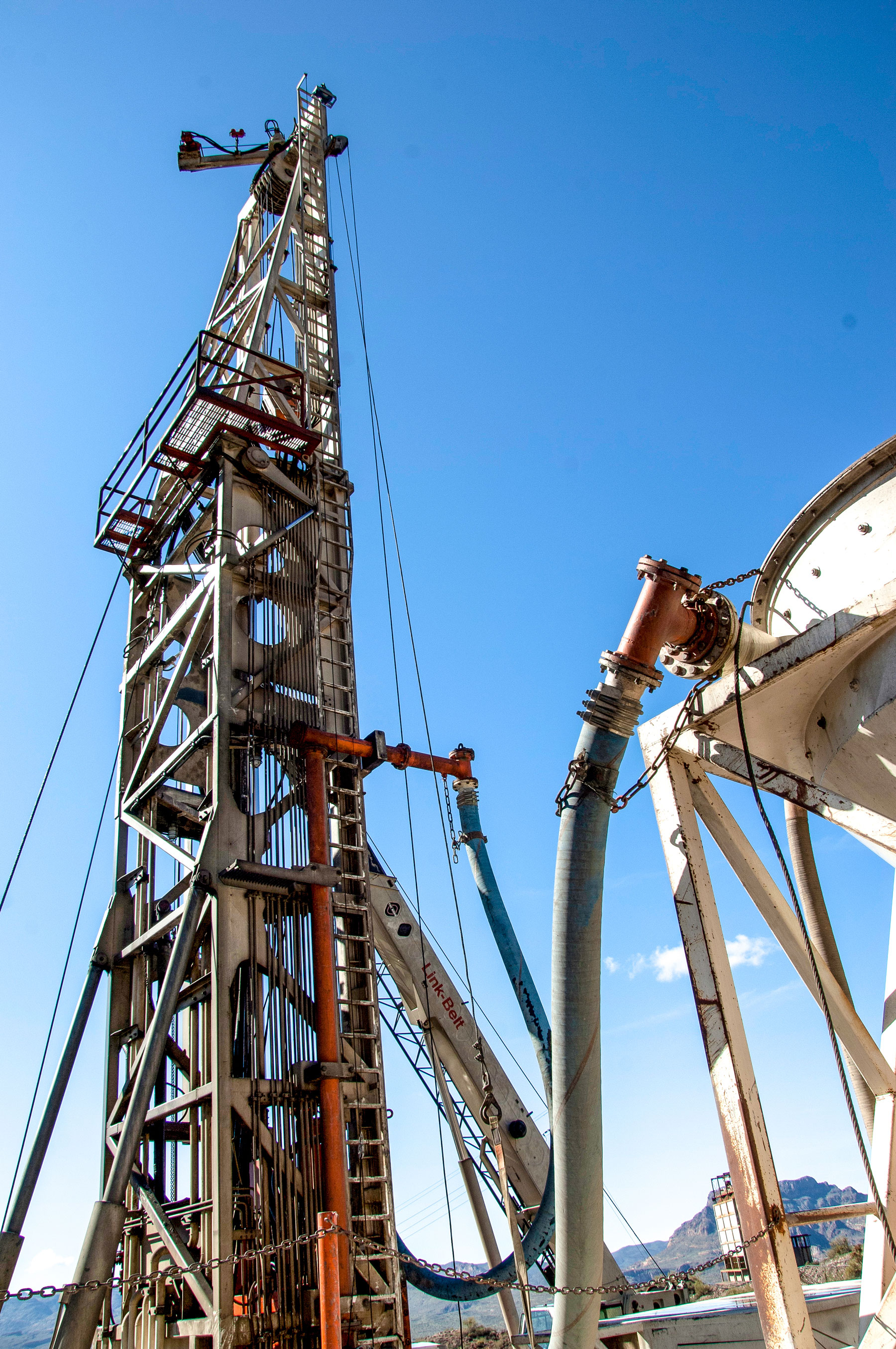OPERACIÓN NO MINERA
agosto 14, 2017
Cómo perforar agujeros de gran diámetro a través de formaciones de circulación perdidas en una sola pasada
Este artículo apareció originalmente en Coal International.
DTFR: PERFORAR AGUJEROS DE GRAN DIÁMETRO
La perforación de circulación inversa inundada de doble tubo (DTFR) está ganando un uso cada vez mayor en los mercados globales a medida que las empresas llegan a apreciar mejor los muchos beneficios que ofrece como alternativa a la perforación rotatoria convencional.
En cada mercado local, están viendo los resultados de todo lo que DTFR tiene para ofrecer, incluidos los pozos de mayor eficiencia, las muestras de alta calidad y la terminación más rápida del pozo. El DTFR, que esencialmente combina los métodos convencionales y de circulación inversa, se ha establecido firmemente en el mercado de los EE. UU. Durante más de 30 años de perforación hasta profundidades de hasta 10,000 pies.

En Australia, donde Boart Longyear comenzó a utilizar la técnica en 2012, ya existen cuatro plataformas que utilizan el método, por lo general, lo que reduce el tiempo necesario para perforar un agujero de 150 metros de dos semanas a cinco días. Se pueden anticipar resultados similares en Chile y África, donde el uso de la DTFR aún se encuentra en sus etapas iniciales.
La DTFR también puede proteger áreas ambientalmente sensibles, así como perforar agujeros de hasta 60 pulgadas de diámetro en una sola pasada. Una aplicación reciente de un equipo de perforación en el suroeste de Wyoming ofrece un buen ejemplo de ello en ambos frentes.
Para crear un pozo de ventilación para una mina subterránea de carbón de pared larga, el equipo tenía poco más de cuatro semanas para guiar un trozo de 60 pulgadas hasta una profundidad de 550 pies a través de una desafiante formación geológica que incluía dos acuíferos. Aunque se vio obstaculizado por las demoras en el inicio del proyecto, el equipo lo hizo varios días antes de la fecha límite.
La técnica DTFR permitió que la inmensa broca penetrara en las zonas pérdida de circulación que impedían el uso de un equipo de perforación más tradicional.
La técnica bombea aire a través del tubo exterior y fuerza el barro y los recortes hacia arriba a través del tubo central, evitando que se obstruyan las formaciones rocosas porosas con estacas, un problema común bajo la alta presión de la perforación convencional.

Una rotación de cuadrillas de tres miembros trabajó durante todo el día, utilizando un equipo de cabeza superior equipada con estabilizadores y broca maciza. Para minimizar el riesgo de colapsar la entrada de la mina, se perforó el pozo al costado del túnel y se instaló y cementó una carcasa de 54 pulgadas con un espesor de pared de 1/2 pulgada. Luego, las cuadrillas de minería subterránea excavaron y perforaron el concreto para abrir el pozo.
Perforar un agujero de tan gran diámetro a través de formaciones de pérdida de circulación en una sola pasada, y en menos de un mes y medio, simplemente no habría sido posible usando otro método, y pocas compañías tienen los recursos, experiencia y pericia necesarios, y mucho menos un equipamiento de perforación lo suficientemente grande.

Aunque utilizado con mayor frecuencia para pozos de agua de gran diámetro, la técnica DTFR es igualmente adecuada para las aplicaciones de pozos geotérmicos o de petróleo & gas, así como para los pozos de ventilación como el de Wyoming. También se está utilizando para perforar dos pozos de inyección en el centro de Utah en el sitio de la primera instalación de almacenamiento de líquidos de gas natural (LGN) de la caverna de sal subterránea en la región de las Montañas Rocosas. Otros usos incluyen pozos para pasta y pozos de servicio.
Obviamente no todas las aplicaciones requieren la gran broca utilizada en la mina de carbón de Wyoming. Existe más de una docena de tamaños de brocas desde 7-7 / 8 pulgadas en adelante, dependiendo de la necesidad.
DTFR se puede usar tanto en formaciones no consolidadas como en formaciones rocosas duras. Si bien las herramientas específicas dependen de la formación y el tamaño del orificio que se necesita, siempre implica tuberías de doble tubo, escariadores de rodillos, estabilizadores y una broca con borde. Esta configuración única permite un orificio recto y un diámetro uniforme en una sola pasada.
Incluso con esta técnica de circulación inversa inundada se necesita la perforación convencional para iniciar el pozo. El pozo de la superficie generalmente va a una profundidad de 20 a 40 pies, donde la cubierta de la superficie está cementada.
El pozo de perforación también se perfora convencionalmente hasta que se alcanza la inmersión, generalmente a unos 100 pies por debajo del suelo.

A partir de ahí, la técnica inversa inundada se hace cargo, lo que permite el ajuste del tubo interno, la presión del pozo inferior y la capacidad de perforar a través de zonas de pérdida de circulación. Una ventaja clave es que se puede utilizar la misma plataforma y barras para ambos métodos, con un simple cambio de mangueras y bombas, al igual que los compresores y el equipo de refuerzo.
Además, la perforación DTFR nunca empuja directamente hacia abajo sobre la broca, pero siempre retiene el peso, lo que resulta en un efecto de péndulo. Esto minimiza la desviación del pozo, lo que resulta en un agujero recto y disminuye el desgaste de la broca, aumentando así la longevidad.
El proceso de DTFR en sí es relativamente sencillo. Comienza con el uso de un fluido de perforación limpio, de viscosidad más baja, a base de lodo, que es alimentado por gravedad por el pozo o anular externo.
El barro recoge los recortes de la cara de la broca, se mezcla con el aire y fluye a la superficie a través del tubo central de manera similar a una paja común para beber. Esto da como resultado una menor presión en el pozo y la formación que la perforación convencional, que bombea fluido de mayor viscosidad por el tubo central y devuelve los materiales por el anillo.
En la superficie, los esquejes y el barro pasan a través del ciclón en el tanque de lodo. Luego, una serie de pantallas vibratorias separa los recortes del barro y los conos de desarenado separan la arena del fluido de perforación, que luego puede recircularse por el orificio.
Debido a que la muestra sale por el tubo central en lugar de por el borde exterior donde podría recoger contaminantes, el resultado son muestras de formación no contaminadas en tiempo real que representan con precisión la formación en la cara de la broca. Esto proporciona relaciones de profundidad exactas para un análisis de formación confiable.
"¡Eureka!"
Nunca se sabe lo que puede encontrar usando la DTFR. Hace varios años, fui perforador en un equipo traído para perforar un agujero exploratorio de 31 pulgadas en una mina de oro de Nevada marcada con agujeros de exploración y núcleo. Pero debido al tamaño del agujero que perforamos y la calidad de las muestras que obtuvimos, el resultado fue un momento "Eureka!": Descubrimos una veta de oro que el cliente no sabía que existía.
Si bien el descubrimiento no desencadenó nada parecido a la fiebre del oro de California de hace más de un siglo y medio, sí atrajo la atención un equipo de geólogos que repentinamente se vio aumentado en número y ocupación, y dio como resultado la re-perforación de varias áreas previamente desatendidas.
Por supuesto, no todas las empresas descubrirán oro. Pero por una buena razón, cada vez más son más los que descubren la perforación de circulación inversa inundada de doble tubo y esperan su propio momento para decir "Eureka".
DISCUSIÓN
-
На данной платформе вы найдете клинику психологического здоровья, которая предоставляет профессиональную помощь для людей, страдающих от стресса и других психологических расстройств. Наша комплексное лечение для восстановления психического здоровья. Врачи нашего центра готовы помочь вам справиться с трудности и вернуться к сбалансированной жизни. Профессионализм наших врачей подтверждена множеством положительных обратной связи. Свяжитесь с нами уже сегодня, чтобы начать путь к восстановлению. http://bluebearproducts.com/__media__/js/netsoltrademark.php?d=empathycenter.ru%2Fpreparations%2Fl%2Flamotridzhin%2F
-
https://pq.hosting/arenda-servera-dlya-majninga-kriptovalyuty
-
Completely I share your opinion. It is excellent idea. It is ready to support you.
-
buy colombia virtual phone number online https://virtual-local-numbers.com/countries/16-colombia.html for calls
-
rental car athens
-
Understanding qualification rules for medicaid is essential for proper planning. Our attorneys provide clarity.
-
Thanks for one’s marvelous posting! I really enjoyed reading it, you’re a great author. I will be sure to bookmark your blog and will eventually come back in the foreseeable future. I want to encourage that you continue your great job, have a nice morning!
-
virtual sms number for verification https://virtual-local-numbers.com/virtualnumber/virtual-sms-number.html
-
yacht mieten sudfrankreich https://eurosegeln.com/yachtcharter-frankreich
-
https://podgoricacar.me/
-
https://www.legaladvice.com/attorney/lawyers/louis-la-pietra-14163
-
https://apeopledirectory.bestdirectory4you.com/Car-Rental-Greece_377951.html
-
https://bookhalifatickets.com/
-
Superb website you have here but I was wanting to know if you knew of any community forums that cover the same topics talked about in this article? I’d really like to be a part of group where I can get opinions from other experienced people that share the same interest. If you have any suggestions, please let me know. Thanks!
-
https://www.eurobricks.com/forum/profile/208966-roscartr/?tab=field_core_pfield_23



